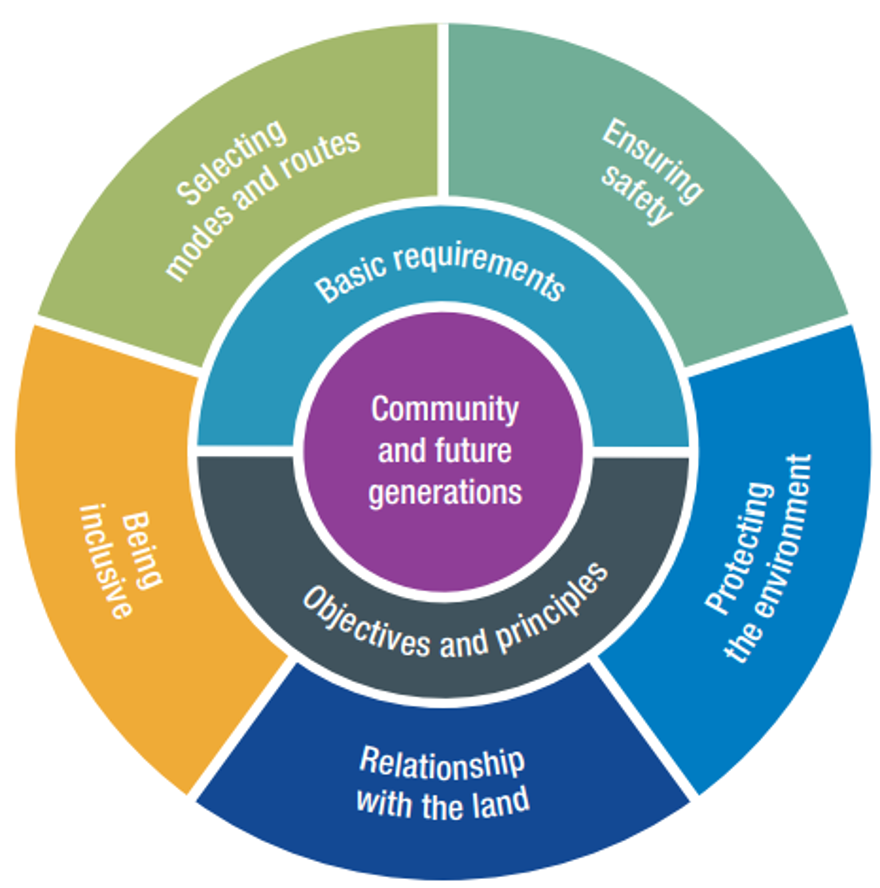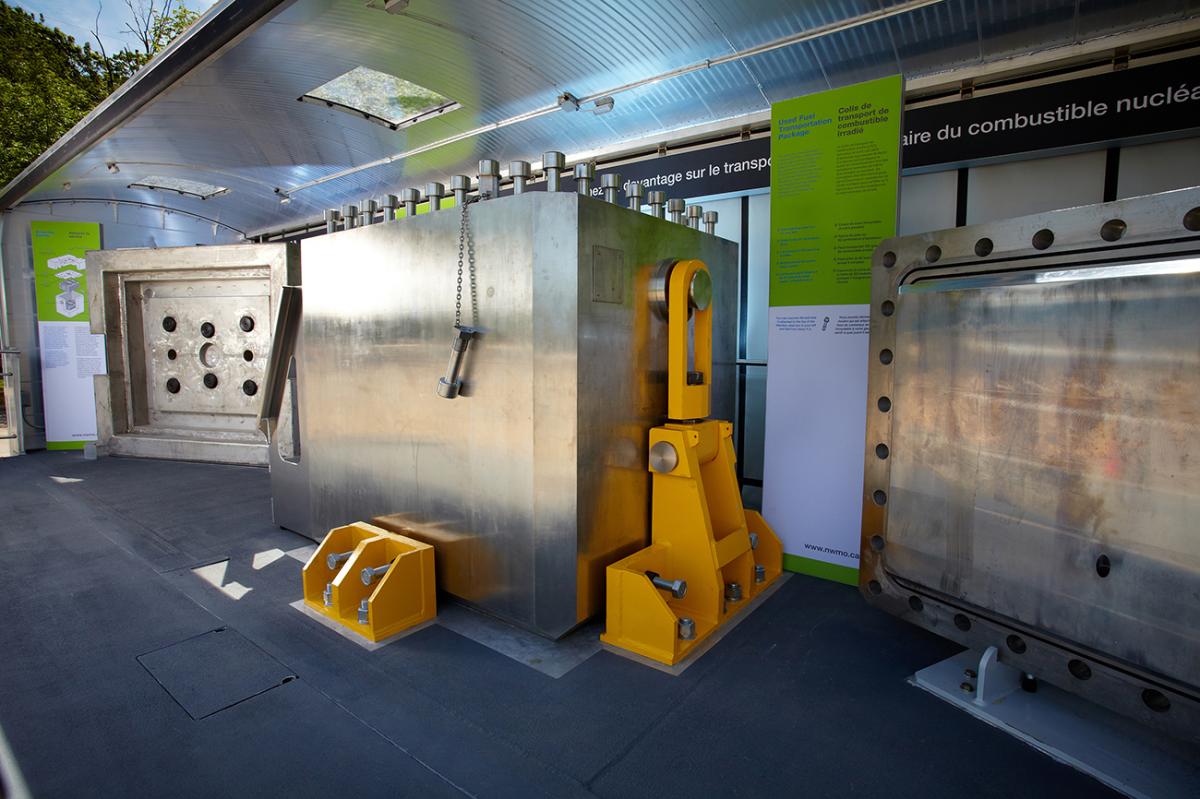By Caitlin Burley, Director, Strategic Programs and Transportation, NWMO
Each year, about one million radioactive shipments are transported safely in Canada. The safe transportation of radioactive materials is commonplace in Canada – and with a plan underway to safely consolidate and store all of Canada’s used nuclear fuel in a deep geological repository, many Canadians and Indigenous peoples are asking “what does this mean for transporting Canada's used nuclear fuel and how can this be done safely?”
Since 2002, Canada has been moving forward with a plan for the safe, long-term management of Canada’s used nuclear fuel. Spearheaded by the Nuclear Waste Management Organization (NWMO), this plan to protect people and the environment was built through a three-year dialogue with the public between 2002 and 2005.
Canada has a shared commitment to do this because for decades, we have relied on nuclear energy for electricity to power our homes and businesses. As a result, there is an inventory of used nuclear fuel that needs to be safely managed long term, beyond safe – but temporary – storage used today. It is important to note that used nuclear fuel is a stable solid bundle that is about the size of a fire log. It is not a liquid or explosive material as many people envision or expect.
At its core, Canada’s plan involves developing a safe and socially acceptable approach for transporting several million used fuel bundles from interim facilities at nuclear power reactor sites to a deep geological repository 500 metres underground – roughly as deep as the CN Tower is tall. The scale and scope are remarkable, representing one of the largest infrastructure projects in our nation’s history.
While the transportation program won’t begin until the repository is operational in the 2040s, we recognize it’s a subject of broad public interest, and so we started our planning early.
As leaders in used nuclear fuel management, we know we have a responsibility to listen. Too often we are taught to think of leadership as a matter of driving action without real consideration for what others think, say or feel. Fundamental to our success is the ability to listen to and understand the questions and concerns that we hear from Canadians and Indigenous peoples and develop a plan that is responsive to those questions and concerns. This approach is part of the NWMO’s journey to align our work with Indigenous Knowledge, including the Seven Grandfather Teachings of Humility, Bravery, Honesty, Wisdom, Truth, Respect and Love.
In 2015, we started an inclusive dialogue about transportation to hear from a diverse cross-section of individuals, municipalities, First Nation and Métis communities and organizations, and first responders from across the country.
To date, we have engaged with thousands of Canadians and Indigenous peoples to understand their perspectives, suggestions, questions, and concerns related to the transportation of used nuclear fuel.
To move the public dialogue one step further, in January 2022 we released two documents, the NWMO’s Transportation Planning Framework and Preliminary Transportation Plan. These documents are responsive to the questions and concerns about transportation that we have heard from the public to date, and they outline the approaches and considerations that will factor into our long-term planning.

Figure 1: Framework for transporting used nuclear fuel co-created with the public
The Transportation Planning Framework sets out objectives, priorities, and considerations for transporting used nuclear fuel. It was informed by public feedback on an initial draft released in 2020.
The Preliminary Transportation Plan is a conceptual plan that describes proven methods and international best practices, while providing an overview of proposed technical approaches, regulatory requirements and planning assumptions that will be employed and built upon to ensure safe and secure transportation.
Today, Canada’s interim facilities to manage used nuclear fuel are located at nuclear reactor sites in Ontario, Quebec, and New Brunswick, and at Atomic Energy of Canada Limited's sites in Manitoba and Chalk River Laboratories in Ontario.
Site selection for the deep geological repository is on track for 2024. Two potential siting areas remain in the community-driven process: the South Bruce area in southern Ontario in the traditional territory of the Saugeen Ojibway Nation, and the Ignace area in northwestern Ontario in the traditional territory of the Wabigoon Lake Ojibway Nation.
Transportation from interim storage to the repository will involve road transportation, or a combination of road and rail, depending on which site is selected. Transportation will occur using predominantly existing infrastructure and will take approximately 50 years to transport, depending on the inventory of used fuel to be managed.
It is important to understand that the NWMO’s preliminary plan is based on over 60 years of demonstrated experience and expertise in Canada and internationally.
In Canada, hundreds of shipments of used fuel have been made since the 1960s. Up to five shipments of used nuclear fuel are transported by road each year. Additionally, in nearly 60 years of transporting used nuclear fuel internationally and in Canada, there have been no serious injuries, health effects, fatalities, or environmental consequences attributable to the radioactive nature of the used nuclear fuel being transported. This is because of the stringent regulatory requirements that are in place.
Used nuclear fuel is the most highly regulated material transported in Canada. It is jointly regulated by the Canadian Nuclear Safety Commission (CNSC) and Transport Canada. The CNSC is responsible for enforcing international standards set by the International Atomic Energy Agency (IAEA). In order to be allowed to transport used nuclear fuel, the NWMO will need to demonstrate to these authorities the safety and security of its transportation system.
The Preliminary Transportation Plan includes many details about the measures in place to ensure transportation activities adhere to strict Canadian regulations and international standards. This includes the development of detailed security and emergency response plans, the establishment of a 24-7 command centre that will continuously monitor the shipments, and the use of security escorts.
Additionally, at the core of NWMO's safe and secure transportation planning is a specialized transportation package that must be certified by the CNSC. Used nuclear fuel transportation containers are engineered and tested to withstand extreme conditions. These tests include a drop test, puncture test, fully engulfing fire test and an emersion test in water. In addition to these tests, many demonstration trials have been done over the years. For example, a train moving at 160 km/hour was run into a full-scale package. After this impact, the package was intact and damage to the package was only superficial.

Figure 2: Used fuel transportation container body, lid and impact limiter
In line with our commitment to listening and aligning our work with Indigenous Knowledge, the transportation planning process over the next two decades will be a dynamic and collaborative activity, and we encourage everyone interested in participating to provide their input, ask questions, and raise concerns.
Indigenous and local knowledge is fundamental to this process, and it is important that our work not only meet regulatory requirements, but also is responsive to peoples’ questions and concerns. Therefore, we have committed to updating our planning framework every three years to describe what we are learning from this dialogue and how we are striving to adapt and continuously improve.
More information about the NWMO’s transportation planning work can be found here: Transporting used nuclear fuel (nwmo.ca). We look forward to the opportunity to continue listening to Canadians and Indigenous peoples as advance Canada’s plan advances.